publications
Journal Articles
2023
-
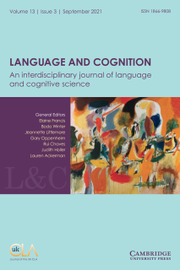 Chunking up speech in real time: linguistic predictors and cognitive constraintsSvetlana Vetchinnikova , Alena Konina , Nitin Williams , Nina Mikušová , and Anna MauranenLanguage and Cognition, 2023
Chunking up speech in real time: linguistic predictors and cognitive constraintsSvetlana Vetchinnikova , Alena Konina , Nitin Williams , Nina Mikušová , and Anna MauranenLanguage and Cognition, 2023There have been some suggestions in linguistics and cognitive science that humans process continuous speech by routinely chunking it up into smaller units. The nature of the process is open to debate, which is complicated by the apparent existence of two entirely different chunking processes, both of which seem to be warranted by the limitations of working memory. To overcome them, humans seem to both combine items into larger units for future retrieval (usage-based chunking), and partition incoming streams into temporal groups (perceptual chunking). To determine linguistic properties and cognitive constraints of perceptual chunking, most previous research has employed short-constructed stimuli modeled on written language. In contrast, we presented linguistically naïve listeners with excerpts of natural speech from corpora and collected their intuitive perceptions of chunk boundaries. We then used mixed-effects logistic regression models to find out to what extent pauses, prosody, syntax, chunk duration, and surprisal predict chunk boundary perception. The results showed that all cues were important, suggesting cue degeneracy, but with substantial variation across listeners and speech excerpts. Chunk duration had a strong effect, supporting the cognitive constraint hypothesis. The direction of the surprisal effect supported the distinction between perceptual and usage-based chunking.
2022
-
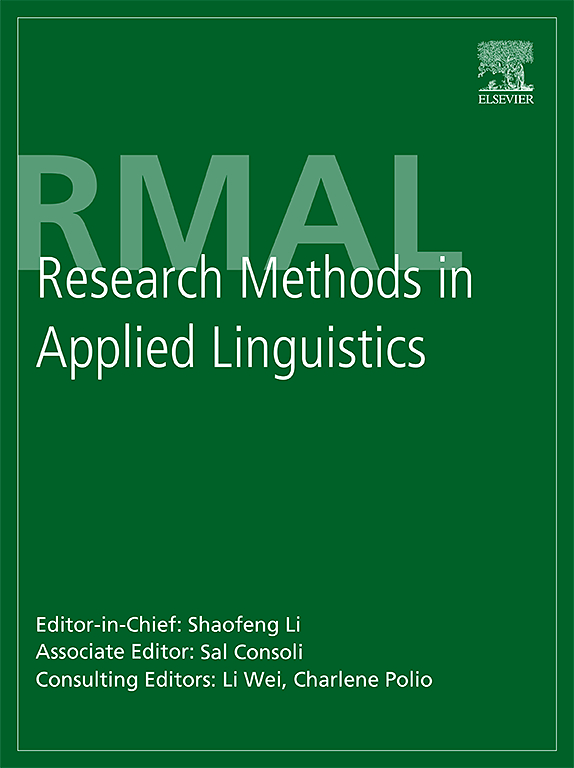 Perceptual chunking of spontaneous speech: Validating a new method with non-native listenersSvetlana Vetchinnikova , Alena Konina , Nitin Williams , Nina Mikušová , and Anna MauranenResearch Methods in Applied Linguistics, 2022
Perceptual chunking of spontaneous speech: Validating a new method with non-native listenersSvetlana Vetchinnikova , Alena Konina , Nitin Williams , Nina Mikušová , and Anna MauranenResearch Methods in Applied Linguistics, 2022Human perception relies on chunking up an incoming information stream into smaller units to make sense of it. Evidence of chunking has been found across different domains, including visual events, music, and dance movement. It is largely uncontested that language processing must also proceed in smaller chunks of some kind. What these online chunks consist in is much less understood. In this paper, we propose that cognitively relevant chunks can be identified by crowdsourcing listener perceptions of chunk boundaries in real-time speech, even if the listeners are non-native speakers of the language. We present a paradigm in which experiment participants simultaneously listen to short extracts of authentic speech and mark chunk boundaries using a custom-built tablet application. We then test the internal validity of the method by measuring the extent to which fluent L2 listeners agree on chunk boundaries. To do this, we use three datasets collected within the paradigm and a suite of different statistical methods. The external validity of the method is studied in a separate paper and is briefly discussed at the end.
-
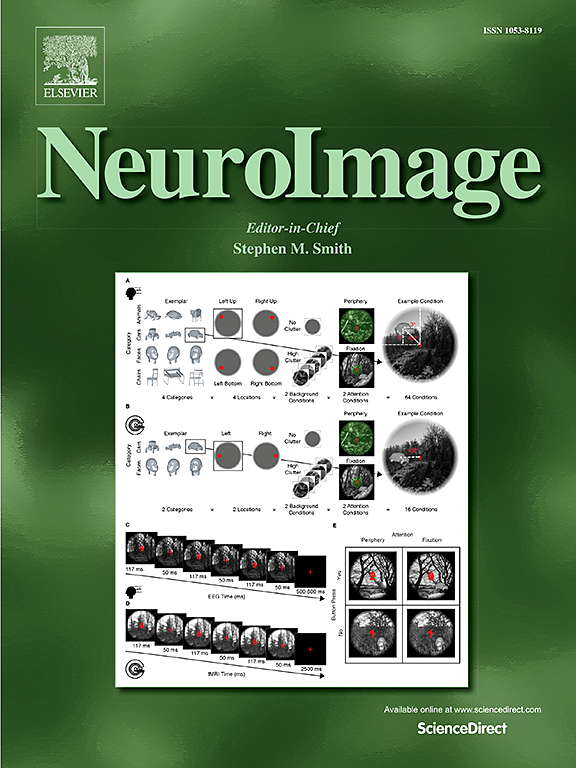 Event-related responses reflect chunk boundaries in natural speechIrina Anurova , Svetlana Vetchinnikova , Aleksandra Dobrego , Nitin Williams , Nina Mikusova , Antti Suni , Anna Mauranen , and Satu PalvaNeuroImage, 2022
Event-related responses reflect chunk boundaries in natural speechIrina Anurova , Svetlana Vetchinnikova , Aleksandra Dobrego , Nitin Williams , Nina Mikusova , Antti Suni , Anna Mauranen , and Satu PalvaNeuroImage, 2022Chunking language has been proposed to be vital for comprehension enabling the extraction of meaning from a continuous stream of speech. However, neurocognitive mechanisms of chunking are poorly understood. The present study investigated neural correlates of chunk boundaries intuitively identified by listeners in natural speech drawn from linguistic corpora using magneto- and electroencephalography (MEEG). In a behavioral experiment, subjects marked chunk boundaries in the excerpts intuitively, which revealed highly consistent chunk boundary markings across the subjects. We next recorded brain activity to investigate whether chunk boundaries with high and medium agreement rates elicit distinct evoked responses compared to non-boundaries. Pauses placed at chunk boundaries elicited a closure positive shift with the sources over bilateral auditory cortices. In contrast, pauses placed within a chunk were perceived as interruptions and elicited a biphasic emitted potential with sources located in the bilateral primary and non-primary auditory areas with right-hemispheric dominance, and in the right inferior frontal cortex. Furthermore, pauses placed at stronger boundaries elicited earlier and more prominent activation over the left hemisphere suggesting that brain responses to chunk boundaries of natural speech can be modulated by the relative strength of different linguistic cues, such as syntactic structure and prosody.
- What is a language error? A discussionMaria Khachaturyan , Maria Kuteeva , Svetlana Vetchinnikova , Gunnar Norrman , and Dmitri LeontjevApples - Journal of Applied Language Studies, 2022Number: 3
Why are we so afraid of making mistakes? Students in language classes, speakers of non-standard varieties, professionals working abroad – we all share the anxiety of dropping the ball. But where does this anxiety come from? Why do we perceive certain linguistic features as errors in the first place? Is there any inherent faultiness in such features, or is a language error arbitrary? And if it is arbitrary, are errors less real? In this discussion, Maria Khachaturyan, Maria Kuteeva and Svetlana Vetchinnikova zoom in on the social life of variation in language and its uneasy relationship with our normative ideas. After that, Gunnar Norrman and Dmitri Leontjev give their comments. The discussion closes with replies by the first three authors.
2015
-
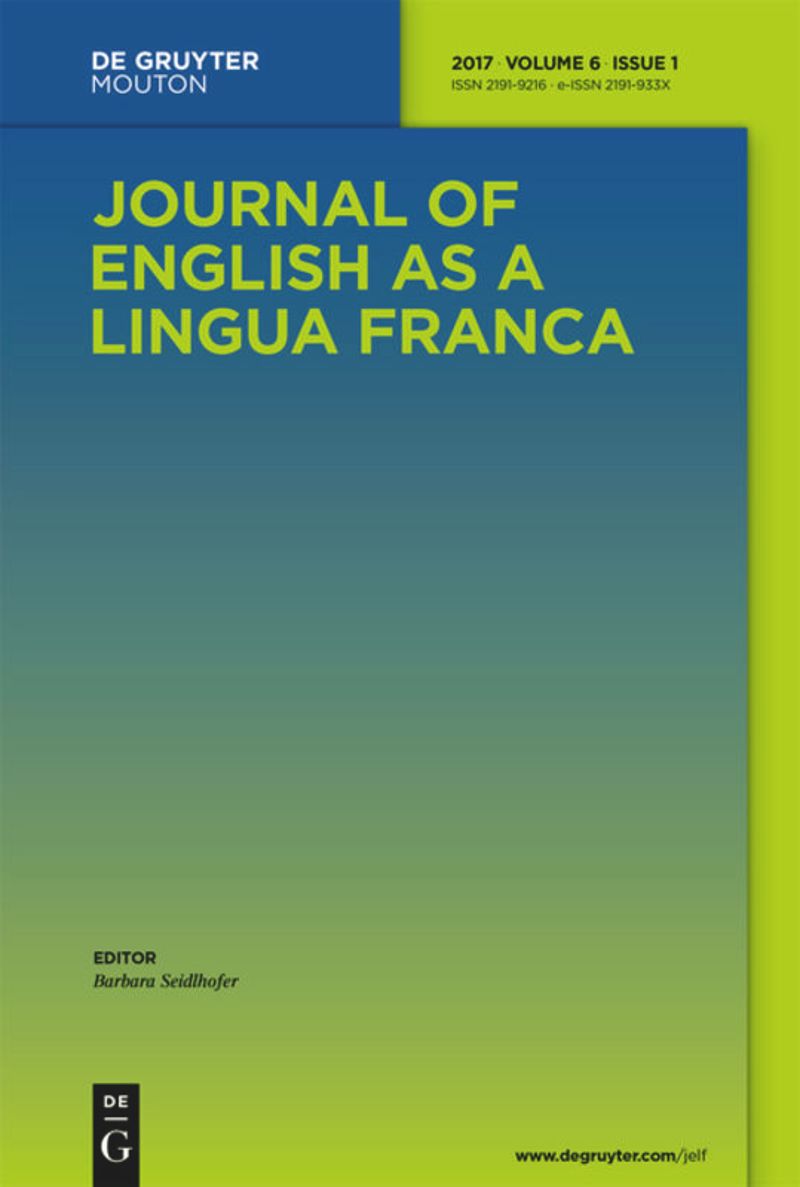 Usage-based recycling or creative exploitation of the shared code? The case of phraseological patterningSvetlana VetchinnikovaJournal of English as a Lingua Franca, 2015
Usage-based recycling or creative exploitation of the shared code? The case of phraseological patterningSvetlana VetchinnikovaJournal of English as a Lingua Franca, 2015AbstractThis paper sets as its aim to show that ELF research is not uniform in its fundamental theoretical assumptions. While one wing of ELF scholars follows a classical Saussurean tradition with its notions of langue and parole, the other is distinctly usage-based. This is not presented as a problem but rather as a matter to be taken into consideration because the views are not easily reconcilable, if at all. Naturally, this divergence of view is clearly visible in data analysis and leads to different interpretations of the underlying processes. I will illustrate my point by the case of phraseological patterning. It is well-known that multi-word units occurring in ELF use are not quite the same as in standard varieties. In SLA the discrepancies are traditionally labelled as errors, a stance ELF researchers do not generally agree with since the conflicting usages do not seem to lose their communicative successfulness. The question at which ELF researchers look differently is whether not quite nativelike phraseological patterning in ELF is a result of analytic or holistic – although fuzzy – processing, in other words, creation or approximation. The answer to this question has profound implications for our understanding of second language processing.
Books
2020
-
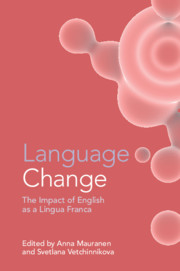 Language Change: The Impact of English as a Lingua Franca2020
Language Change: The Impact of English as a Lingua Franca2020English as a lingua franca (ELF) has become ubiquitous in today’s globalised, mobile and fast-changing world. It is clear that it will have an unprecedented impact not only on how we communicate but also on our understanding of language use and change. What exactly ELF brings to our life and to language theory is a question which requires an interdisciplinary take. This book gathers together leading scholars from world Englishes, typology, language history, cognitive linguistics, translation studies, multilingualism, sociolinguistics and ELF research itself to seek state-of-the-art answers. Chapters present original insights on language change, based on theoretical approaches and empirical studies, and provide clear examples of social, interactional and cognitive changes that ELF instigates. The picture which unfolds on the pages of this book is complex, dynamic and makes a convincing case for the importance of English as a lingua franca on language change at a global scale.
2019
-
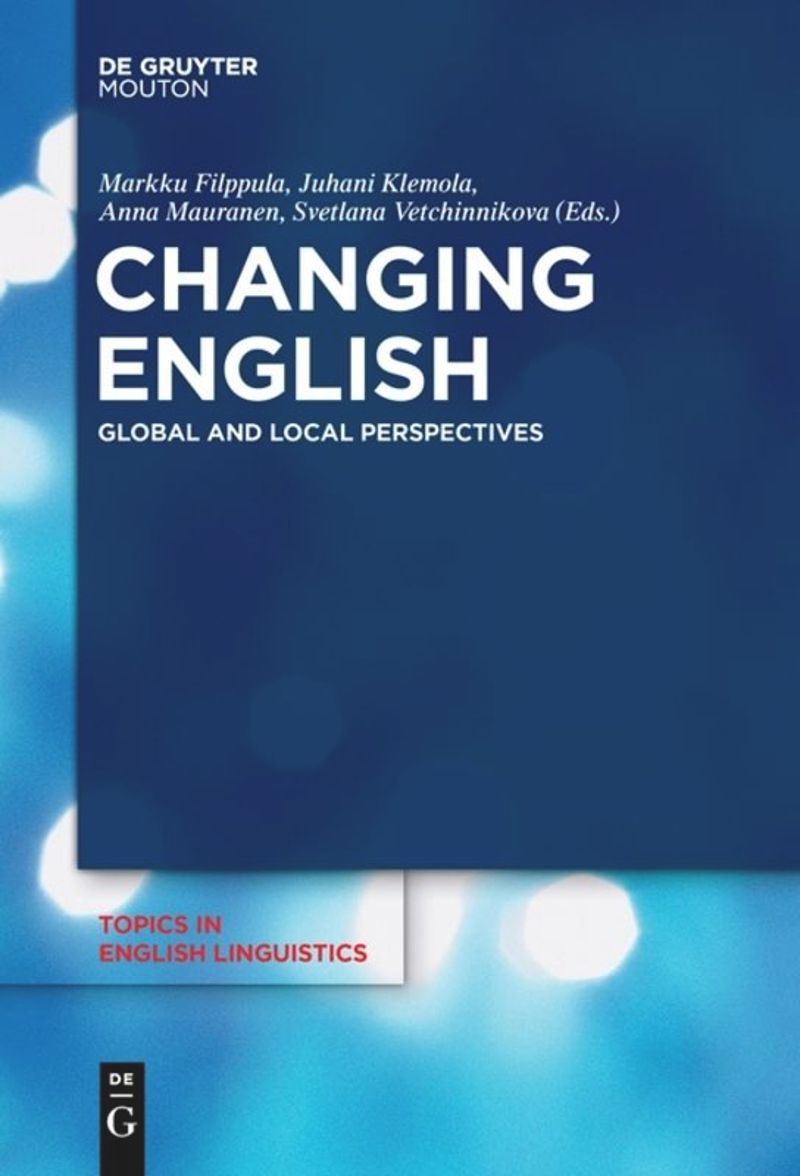 Changing English: Global and Local Perspectives2019
Changing English: Global and Local Perspectives2019This book examines the special nature of English both as a global and a local language, focusing on some of the ongoing changes and on the emerging new structural and discoursal characteristics of varieties of English. Although it is widely recognised that processes of language change and contact bear affinities, for example, to processes observable in second-language acquisition and lingua franca use, the research into these fields has so far not been sufficiently brought into contact with each other. The articles in this volume set out to combine all these perspectives in ways that give us a better understanding of the changing nature of English in the modern world.
-
 Phraseology and the Advanced Language LearnerSvetlana Vetchinnikova2019
Phraseology and the Advanced Language LearnerSvetlana Vetchinnikova2019Phraseology is often thought of as an anomaly and a headache for language learners. However, researchers have tended to focus on just one end of the scale: fairly fixed, conventional multi-word units. Here their special status and any divergence from the standard form are clearly evident. What happens at the other end of the scale? How much and what kind of variability does phraseological patterning tolerate? Svetlana Vetchinnikova explores meaning-shift units (MSUs) in second language usage, acquisition and processing. Importantly, she argues for the value of looking at individual languages and tracing MSUs as they are learned from exposure, used in individual language output and processed in the mind - and advocates a shift of focus from groups to individuals. This important study develops a unified view on phraseological patterning in second language acquisition and use and the processes which lead to it.
Book Chapters
2020
- ELF and Language Change at the Individual LevelSvetlana Vetchinnikova , and Turo HiltunenIn Language Change , 2020
- Introduction: Dynamics of Change from Different Perspectives and on Different ScalesAnna Mauranen , and Svetlana VetchinnikovaIn Language Change: The Impact of English as a Lingua Franca , 2020
Languages undergo continual change, but not at constant speed. External and internal dynamics affect the speed as well as the different scales at which change occurs. Among important external factors, societal change, mobility and the ensuing language contact create conditions of stability or instability and upheaval. Language-internal changes may be triggered off by external changes, for instance when these lead to lively contact between languages or varieties, but internal changes may also begin seemingly autonomously, and may affect different subsystems, or one or more subsystems at different stages. In this volume both internal and external processes of language change are addressed, with a focus on contemporary processes and on English, although not exclusively, so that historical lines of development are included, as are other languages. Throughout the volume, the contributions highlight social contexts of various sizes and kinds, and social processes interacting with linguistic ones. A few chapters also delve into cognitive processes and individual users, thus ensuring that a range of scales is covered in addressing the issues of change and the specific phenomenon of English as a global lingua franca.
2017
- Multilingualism in English as a Lingua Franca: Flagging as an Indicator of Perceived Acceptability and IntelligibilityNiina Hynninen , Kaisa Pietikäinen , and Svetlana VetchinnikovaIn Challenging the Myth of Monolingual Corpora , 2017
- On the relationship between the cognitive and the communal: a complex systems perspectiveSvetlana VetchinnikovaIn Changing English , 2017
This paper presents a specific take on the relationship between the global and the local in language. In particular, it draws a distinction between the cognitive and the communal plane of language representation and attempts to model the relationship between the two using complexity theory. To operationalise this relationship and examine it with corpus linguistic methods, it proposes a concept of a cognitive corpus, setting it against the more usual idea of a corpus as representing the language of a certain community of speakers. As a case study, the paper compares the properties of chunking at the cognitive and communal planes. The study shows that (1) chunks at the cognitive plane seem to be more fixed than at the communal, (2) their patterning at the communal plane can be seen as emergent from the patterning observable in individual languages, but that (3) there is also similarity in the shape of the patterning across the two planes. These findings suggest that although the processes leading to multi-word unit patterning are different at each of the planes, the similarity in the shape the patterning takes might be regarded as an indication of the fractal structure of language which is a common property of complex adaptive systems. For example, Zipf’s law, which is able to model the patterning at each of the planes, can be seen as one of the symptoms of such structure. Since the cognitive and the communal planes of language are in constant interaction with each other, such conceptualisation suggests intriguing implications for ongoing change in English and the role second language users might play in it.
Conference Articles
2017
- ChunkitApp: Investigating the Relevant Units of Online Speech ProcessingSvetlana Vetchinnikova , Anna Mauranen , and Nina MikušováIn INTERSPEECH 2017 – 18th Annual Conference of the International Speech Communication Association , 2017
This paper presents a web-based application for tablets ‘ChunkitApp’ developed to investigate chunking in online speech processing. The design of the app is based on recent theoretical developments in linguistics and cognitive science, and in particular on the suggestions of Linear Unit Grammar [1]. The data collected using the app provides evidence for the reality of online chunking in language processing and the validity of the construct. In addition to experimental uses, the app has potential applications in language education and speech recognition.
